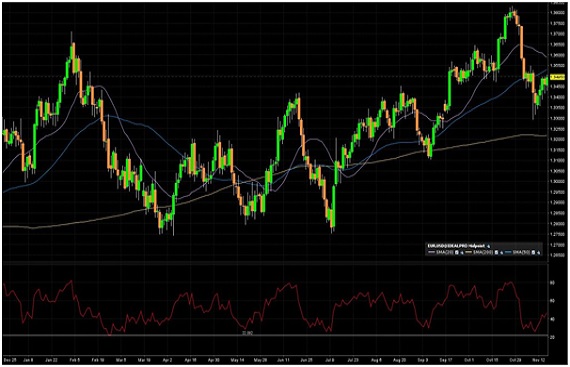How to Define Trading Profits and Losses?

Currency trading has become more widespread nowadays because of the appearance of multiple online platforms. Almost everyone can try themselves in trading. If you are a beginner trader or have some experience in the field, you have to calculate your profit and loss. Starters might think that traders define their profit after closing the position. However, it is also essential to know your possible risks before trading. It will help you create a strategy for what to do if something goes wrong. Let’s discover this topic more.
Reasons to Calculate Your Profit and Loss
You don’t have to calculate profit and loss manually anymore. Now, online trading platforms usually provide a Forex Profit calculator or define your possible profit when you want to open a position. Your goal is to understand those calculations.
Profits and losses from all positions directly influence your margin. It is the first reason you should define them before and during trading. If you didn't open a position, you would be able to see how much money is required to do this and whether you are ready to take all the risks. You have to watch how the price changes during trading, and you will see the profits or losses you have right now.
According to the state of the position, there are unrealized and realized profits or losses. The first type defines your possible income from trading that isn’t closed now. Unrealized profit or loss can change when the price rises or falls. It is important to be aware of whether you get profit or not. This information allows you to quickly close the position when there is a risk of loss or the position gives you the profit you want.
Another type of profit is called realized. It shows what income or loss you get from closed positions. The mark-to-market value of the position is what helps you to define the right time to close it. For a long position, it is a price that allows you to sell. If you want to close a short position, mark-to-market value is a price at which you can buy.
Your margin balance will depend on both unrealized and realized profits and losses. So, the main reason for calculating the income of the open or closed positions is to see what you have already earned or what you can get.
How to Make the Calculations?
Here we will analyze how to define profit and loss for both long and short positions. In each case, you need to know the size of the position and its leverage.
Long position
If you want to close a long position, you will get profit in case the price increases and lose money if it decreases. Leverage influences the amount of profit or loss. It defines the smallest price movement, which allows you to get the income. For example, if the leverage is 1/100, it is the same as 1% or 0.0001. When the price changes from 1.5167 to 1.5178, it has a difference of 0.0011. You should multiply this amount and the size of the position to calculate the profit. If you have a $100,000 position, your profit will be $110. The loss will be the same if the price falls.
Short position
The calculations for short positions are the same as for the case above. The only difference is that you will get a loss with the price rise. If we take the previous example, when the price increases from 1.5167 to 1.5178, you will lose $110 in a $100,000 short position.
Which instruments to use?
It’s a simple way to quickly define the profit or loss. You can make these calculations when you analyze the offered positions and market. It is more convenient to use a profit calculator on online platforms. Here is a guide on how to calculate your profit with the FBS forex calculator.
- Indicate an account type
You should choose an account type where you will trade. Different instruments and leverage depend on it.
- Select a trading instrument
A trading instrument defines the currency market where you plan to trade. Bid and ask prices will change according to the trading instrument you choose.
- Enter the number of lots
Here you should define how many lots you strive to trade. You should consider that the lot size is different for each market.
- Choose currency
FBS forex trading calculator has USD and EUR currency options. You can choose the one that is more convenient for you to calculate the profit.
- Choose a leverage
If you have a Standard account, you can benefit from different leverage amounts. Other accounts have fewer options; sometimes, only one option is available.
- Write ask and bid prices
The last thing to do is to indicate ask and bid prices. Usually, they are offered automatically.
When you write all the information, you can see the calculations in detail. They include a point value according to the contract size. The calculator will also show you a spread, swap long, and swap short. The margin reveals the amount of the possible income.
Though calculators are helpful to quickly define the profit or loss, you should be attentive too. Real numbers might slightly differ, but this difference is usually insignificant.
Make Your Trading More Effective
One of the main parts of trading is the amount of profit and loss you get. If you don’t analyze these numbers, you might be at risk at a particular moment. The profit and loss calculations are easier nowadays, like trading itself. You can do it manually if you want to get a result quickly or use a calculator for a more comprehensive answer. Calculating profit and loss amounts before and during the trading session makes it more effective. You can use this guide and the FBS calculator to make this process easier.
Read More News :



.jpg)